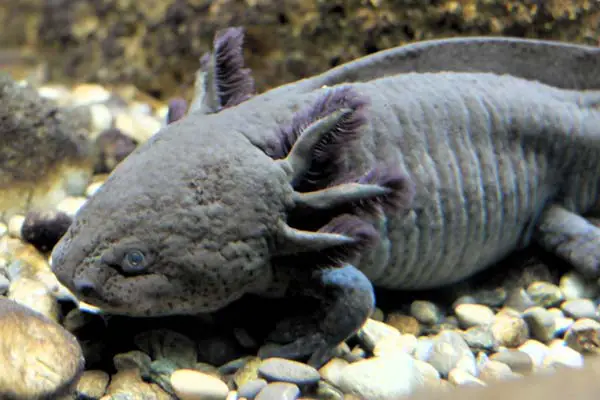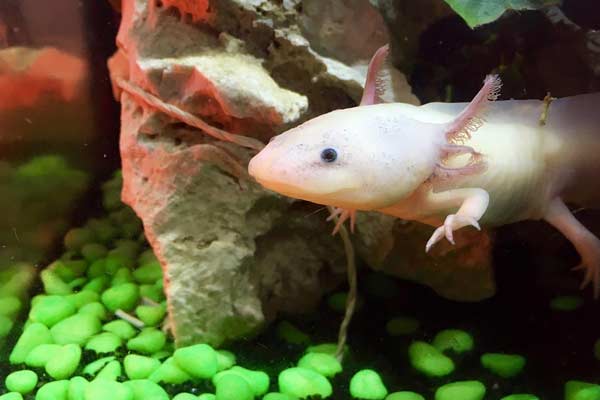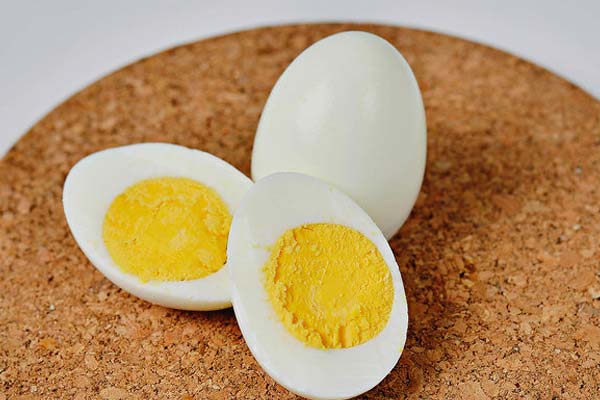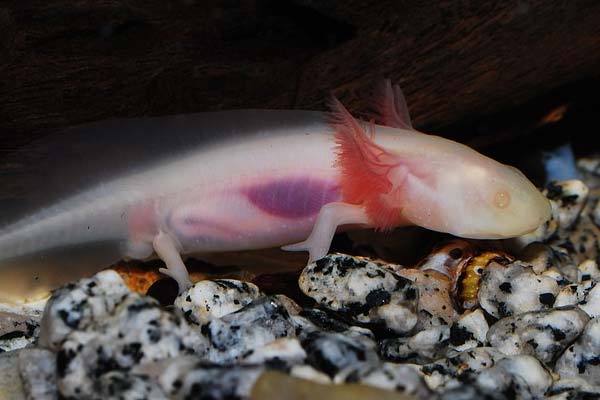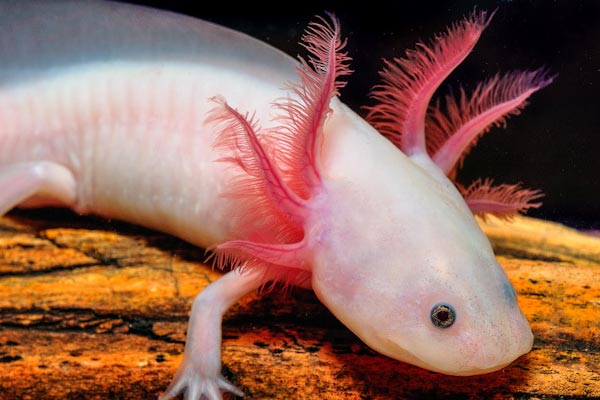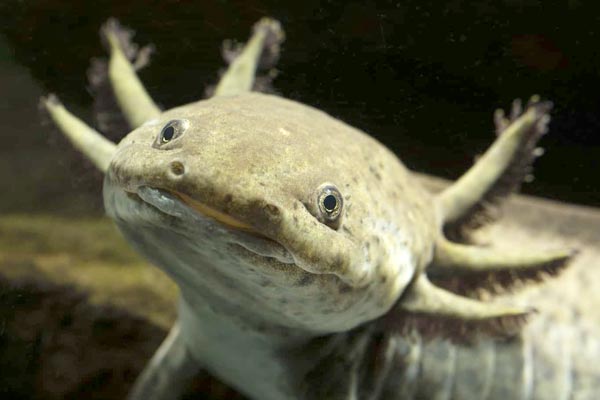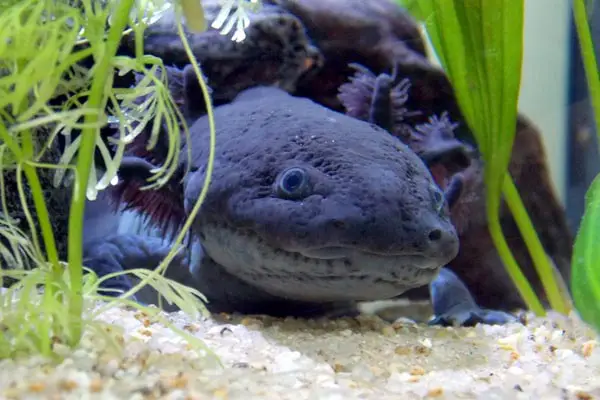Dead Axolotl: Causes, Prevention, and What to Do Next
Axolotls are fascinating creatures that have become increasingly popular as pets. They are known for their unique ability to regenerate limbs and cute appearance. However, like any living creature, axolotls can die for various reasons.
When an axolotl dies, it can be a distressing experience for pet owners. It is essential to understand the common reasons for axolotl deaths to prevent them from happening in the future.
The most common reasons for axolotl deaths include water temperature, water quality, and stress. Maintaining a suitable environment for axolotls to thrive in and monitoring their behavior for signs of distress or illness is crucial.
Why Axolotls Float When They Die
Axolotls have gained popularity among amphibian enthusiasts due to their remarkable capacity for regenerating limbs and organs, setting them apart as unique and fascinating pets.
However, despite their remarkable regenerative abilities, axolotls are still susceptible to health issues that can lead to death.
One common occurrence when an axolotl dies is that it will float to the water’s surface. This is due to a buildup of gases in the body caused by decomposition. The gases, primarily carbon dioxide and methane, cause the axolotl to become buoyant and float to the surface.
Imbalanced water conditions can also contribute to an axolotl floating when it dies. Axolotls are very sensitive to changes in water quality, and poor water conditions can lead to stress and illness. If an axolotl dies due to poor water conditions, it may float to the surface.
It’s important to note that floating does not always indicate that an axolotl has died. Axolotls are known to float as normal behavior, especially when they are resting or sleeping. However, if an axolotl is floating more frequently or for extended periods, it could be a sign of digestive trouble or bloating.
Reasons for Axolotl Mortality
Axolotls are fascinating creatures and make great pets, but they require proper care to thrive. Unfortunately, axolotls are prone to various health issues that can lead to untimely death.
Poor Water Quality
Poor water quality is a major factor contributing to axolotl mortality. They are highly sensitive to fluctuations in water chemistry, with elevated levels of ammonia, nitrite, and nitrate leading to significant stress and illness.
Axolotls require a cycled tank with a filter to maintain good water quality. Owners should also perform regular water changes and monitor water parameters to ensure the water is safe for their axolotls.
Non-Cycled Tank and High Ammonia Levels
A non-cycled tank is another common cause of axolotl mortality. A tank that is not cycled will have high ammonia levels, which is toxic to axolotls. High ammonia levels can cause stress, illness, and death. Owners should cycle their tanks before adding axolotls and monitor ammonia levels regularly to ensure they are safe.
Impact of Water Temperature on Axolotl Health
Water temperature is another critical factor in axolotl health. Axolotls are cold-blooded animals and require a specific temperature range to stay healthy. Water that is too warm or too cold can cause stress and illness. Owners should maintain a consistent water temperature within the recommended range for their axolotls.
Genetic Factors and Poor Axolotl Genetics
Genetic factors can contribute to axolotl mortality, with some individuals having defects or predispositions to certain health issues. To mitigate this risk, buying axolotls from reputable breeders and avoiding those with known genetic problems is essential.
Disease and Parasite Infestation
Disease and parasite infestation can also cause axolotl mortality. Axolotls are susceptible to various diseases and parasites, including bacterial infections, fungal infections, and parasitic infestations. Owners should monitor their axolotls for signs of illness and seek veterinary care if necessary.
Inadequate Feeding and Impaction
Inadequate feeding and impaction are additional factors that can lead to axolotl mortality. A balanced diet, including pellets, worms, and insects, is crucial for their health. Impaction, caused by ingesting foreign objects, can result in digestive blockages and illness.
Monitoring signs of impaction and adopting proper feeding and substrate practices is essential to prevent this issue.
Keeping Axolotls Healthy to Prevent Mortality
To prevent mortality in axolotls, it is crucial to keep them healthy by providing proper care and attention. This includes maintaining a nutritious diet, keeping their tank clean, and monitoring their overall health.
Proper Feeding Practices for Optimal Nutrition
Axolotls are carnivorous and require a diet rich in protein. They can be fed various foods, including earthworms, bloodworms, and brine shrimp. Providing a balanced diet that combines these foods is crucial to ensure they receive all the necessary nutrients.
Overfeeding can be a common issue with axolotls, leading to obesity and other health issues. Feeding them once a day and removing any uneaten food after 15 minutes is recommended to prevent overfeeding.
Regular Water Changes and Tank Maintenance
Axolotls require a clean and well-maintained tank due to their sensitivity to water quality changes. Regular water changes (once a week) and cleaning the filter are essential to remove waste and prevent harmful bacteria and contaminants. This upkeep ensures their health and discourages the growth of toxic algae and organisms.
Prompt Disease Prevention and Treatment
Axolotls can be susceptible to various diseases and illnesses, such as fungal infections and bacterial infections. Prompt disease prevention and treatment are essential to prevent mortality.
To prevent the spread of disease, it is important to quarantine any new axolotls before introducing them to the main tank. Regularly monitoring their behavior and overall health can also help detect potential issues early on.
Maintaining Stable Water Temperature
Axolotls, being cold-blooded, thrive in a stable water temperature between 16-18 degrees Celsius (60-64 degrees Fahrenheit). Fluctuations in temperature can cause stress and health problems, so regular monitoring and adjustments are vital for their well-being.
How to Handle a Floating Axolotl
When an axolotl is floating, it can signify a few different issues. One common cause is gas buildup in the digestive system, leading to bloating. Another cause can be overfeeding, which can lead to constipation. In some cases, the axolotl may suffer from a swim bladder disorder.
Addressing a floating axolotl involves taking a few steps. Regularly cleaning the tank and frequent water changes can prevent waste buildup and harmful bacteria, aiding in resolving the issue.
Considerations for feeding adjustments should also be made. Overfeeding can lead to constipation and bloating, which can cause the axolotl to float. It is recommended to feed axolotls small, frequent meals to prevent overeating.
If the axolotl is suffering from constipation or bloating, utilizing refrigeration as a temporary solution can help. Placing the axolotl in a container of cool water for 15-20 minutes can help to reduce bloating and promote digestion.
Identifying Signs of a Dying Axolotl
Axolotls are unique pets that require specific care to maintain their health. Unfortunately, despite the best care, axolotls can still become ill and die. It is essential to identify the signs of a dying axolotl so that you can take action to help them.
Observable indications of a dying axolotl
Here are some observable indications that an axolotl may be dying:
- Lack of movement: A dying axolotl may become less active and spend most of its time at the bottom of the tank.
- Abnormal floating or sinking: If the axolotl’s body is floating awkwardly or lying on the bottom of the tank motionless, it could be a sign of something wrong.
- Gill movement: Check to see if the axolotl’s gills are moving. If they are not, it is a bad sign.
- Changes in skin color: A dying axolotl’s skin may appear duller and grayish instead of its usual bright color.
- Swelling or abnormal growths: Swelling of the mouth or head and gills falling off or skin problems may also indicate a dying axolotl.
- Loss of appetite: A dying axolotl may stop eating or lose weight quickly and turn red.
Differences between normal and dying behavior
It is essential to note the differences between normal and dying behavior in axolotls. For example, while it is normal for axolotls to rest at the bottom of their tank, a dying axolotl may stay there for long periods without moving.
Additionally, while axolotls may sometimes lose their appetite due to stress or other factors, a dying axolotl usually stops eating.
Safe Disposal Methods for a Dead Axolotl
When an axolotl passes away, it is essential to dispose of its body safely and responsibly. Here are some common questions related to the disposal of dead axolotls.
Common Questions Related to Disposal
Q: Can I flush a dead axolotl down the toilet?
No. Disposing a dead axolotl by flushing it down the toilet is neither safe nor responsible. This method can contaminate the water supply and harm other aquatic life.
Q: Can I bury a dead axolotl in my backyard?
Yes, burying a dead axolotl in your backyard is a safe and common disposal method. However, there are some considerations to keep in mind, which we will discuss in the next section.
Q: Can I donate a dead axolotl to a science museum or research facility?
Yes, some science museums or research facilities may accept donations of dead axolotls for educational or research purposes. However, it is crucial to contact them beforehand to ensure they have the proper permits and protocols for accepting animal donations.
Options for Disposal
Burial
Burying a dead axolotl in your backyard is a safe and standard disposal method. However, there are some considerations to keep in mind. First, bury the axolotl in a deep hole, at least 2-3 feet deep, to prevent scavengers from digging it up.
Second, avoid burying the axolotl near plants or water sources, as it can contaminate the soil and water.
Finally, for safety, place the axolotl in a sealed container (e.g., plastic bag or Tupperware) before burial to avoid potential disease transmission.
Taxidermy
Taxidermy is preserving an animal’s body for display or study. While taxidermy can be a beautiful way to honor a beloved pet, it is not a common or recommended disposal method for a dead axolotl. Taxidermy requires specialized skills and equipment, and it can be expensive.
Cremation
Cremation is the process of burning an animal’s body to ash. While cremation is a safe and hygienic disposal method, it is not a common or recommended method for a dead axolotl. Cremation requires specialized equipment and facilities, and it can be expensive.
Considerations for Disease Transmission
When disposing of a dead axolotl, be mindful of disease transmission risks. Wear gloves, wash hands thoroughly after handling, and use a sealed container (e.g., plastic bag or Tupperware) to minimize potential harm.
Conclusion
Handling the situation with care and responsibility is vital in the unfortunate event of an axolotl’s death. Here are some final thoughts on handling a dead axolotl:
Removal: Removing the deceased axolotl from the tank as soon as possible is crucial. Leaving the body in the tank can cause water contamination and lead to health issues for other aquatic pets in the tank.
Disposal: Proper disposal of the axolotl’s body is essential. Some options include burying it in a garden or composting it. It is critical to avoid flushing the body down the toilet or throwing it in the trash, as this can lead to environmental contamination.
Prevention: While death is a natural part of life, it is crucial to take preventative measures to reduce the risk of death in axolotls. This includes maintaining proper water quality, a healthy diet, and monitoring for any signs of illness or injury.
Seeking Help: If an axolotl’s death was unexpected or due to unknown causes, it may be beneficial to seek the help of a veterinarian or aquatic specialist. They can provide insight into potential health issues and offer guidance on preventing future deaths.

